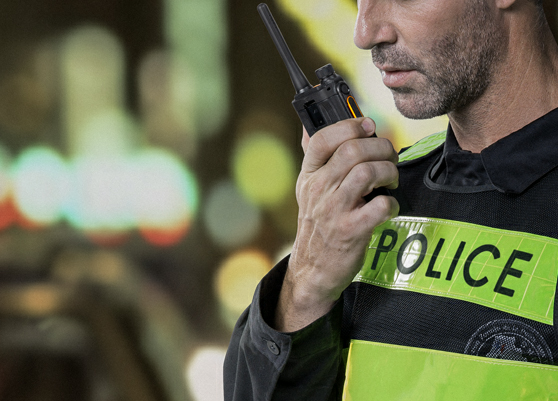Know the Radio Codes on Radio Communications
Two-way Radio
Radio communication, supported by advanced technology such as that offered by Hytera, plays a vital role in environments where coordination and rapid response are crucial. This blog focuses on radio speaking codes, a standardized series of short signals that facilitate the transmission of messages. Discover how these codes in combination with Hytera's cutting-edge equipment, optimize communication in dynamic and demanding situations.

Code List 10:
10-0 - Caution
10-4 - Understood, message received
10-7 - Out of order
10-8 - In service and available
10-9 - Repeat message
10-14 - Person in a drunken state
10-20 - What is your location?
10-22 - Report in person
10-26 - Cancel the last information
10-27 - Change channel
10-30 - Misuse of the device / Against the rules
10-33 - Necessary medical assistance
10-37 - Crane request in…
10-38 - Ambulance request in…
10-42 - Accident in…
10-45 - General call / Attention to all units
10-53 - Road closed
10-55 - Driving too fast
10-70 - Fire / Firefighter Request
10-87 - I request the address of…
10-91 - Speak closer to the microphone
10-99 - Mission accomplished
Who uses these codes?
Codes 10 are a fundamental tool in the communication of emergency services, police, security, and other organizations that require efficient coordination. From police to emergency medical services, these codes provide a rapid, standardized means of transmitting crucial information. Its use has spread to various sectors where precise and fast communication is essential, making it a common language for professionals who face critical situations daily.
It should be noted that there is no single "official list" of 10 codes. Although there are common 10 codes that are widely used, organizations have variations or additional codes specific to their local needs.
Codes to talk on the radio
Q Code List:
In addition to 10 codes, radio communication benefits from Q codes, a series of abbreviations, and standardized codes to improve efficiency in the transmission of information. Here are some representative examples:
QAP - Be attentive or in frequency / Are you attentive or in frequency?
QRG - Change the frequency to… / What is your frequency?
QRM - Radio Frequency Interference / Do you have interference?
QRT - I stop transmitting / Can you stop transmitting?
QRU - Status / What is your status?
QRZ - Identification / Who is calling me?
QSL - I confirm receipt / Do you acknowledge receipt?
QSP - Forward message
QSY - Frequency change / Can we change the frequency to…?
QTH - Geographic position or location / What is your location?
These Q codes are widely used in contexts where accuracy and speed in transmitting information are essential, such as in amateur radio operations and emergencies. The combination of 10 codes and Q codes offers a complete set of tools for efficient communication in various circumstances.
Phonetic Alphabet: Clear and Precise Communication in Radio Communication
Radio communication is essential in various contexts, from public safety to emergencies situations and professional communications. To ensure clear and accurate communication, the phonetic alphabet is used, a system that assigns words to each letter of the alphabet to avoid confusion during transmission.
International Phonetic Alphabet:
A - Alpha
B - Bravo
C-Charlie
D-Delta
E - Echo
F - Foxtrot
G - Golf
H - Hotel
I - India
J-Juliett
K - Kilo
L - Lima
M-Mike
N - November
O - Oscar
P - Pope
Q - Quebec
R - Romeo
S - Sierra
T - Tango
U - Uniform
V - Victor
W - Whiskey
X - X-ray
Y - Yankee
Z - Zulu
Using the international phonetic alphabet makes it easier to transmit and understand messages, especially in noisy environments or in critical situations where clarity is essential. By knowing and using these keywords, the efficiency and effectiveness of radio communication are improved, minimizing possible misunderstandings and maximizing security and coordination.
Remember to incorporate these practices into your radio communications to ensure a smooth and secure interaction. Communicate clearly and accurately using the international phonetic alphabet!





